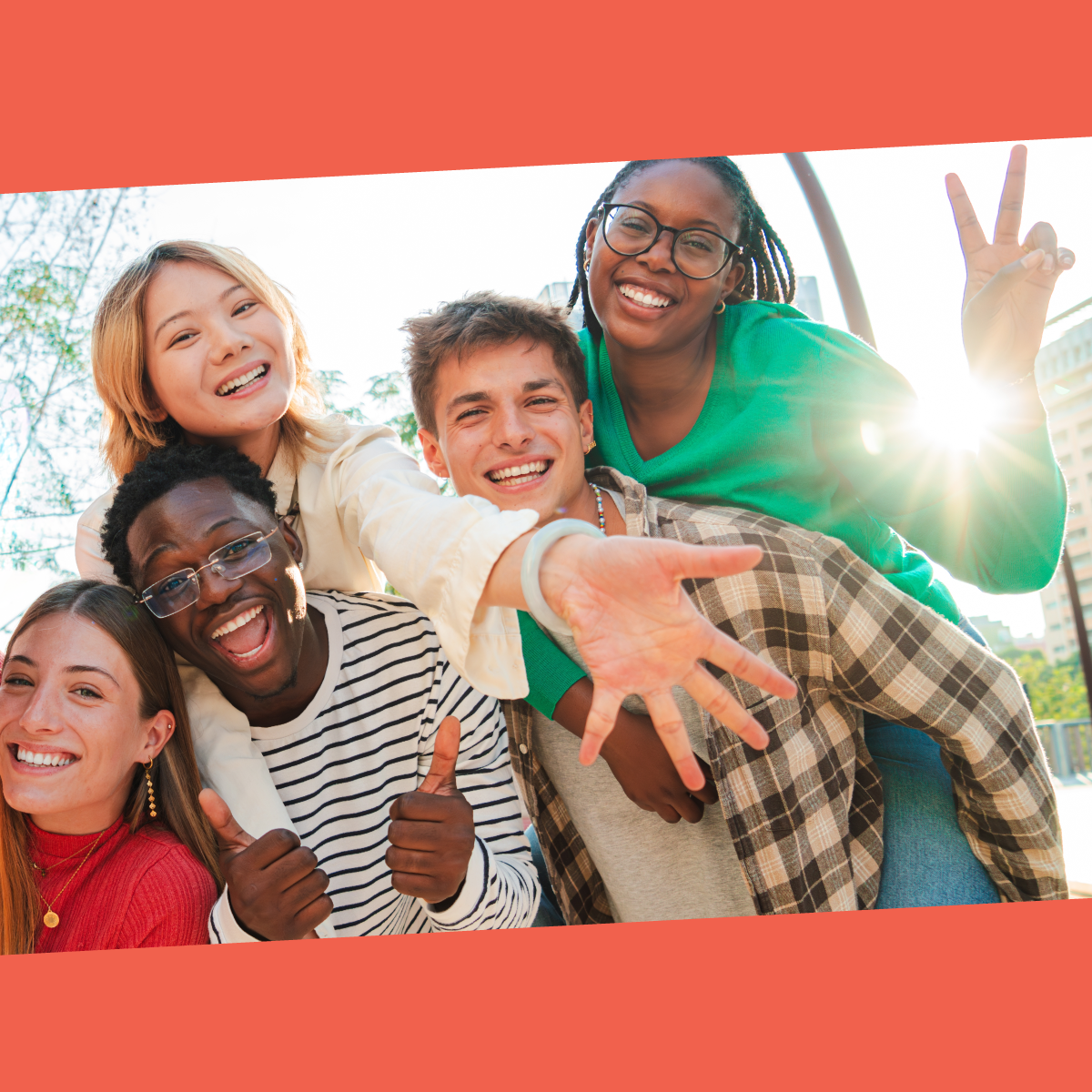Transforming Schools with Students
Transforming schools into equitable, inclusive, and culturally sustaining communities requires more than just policy shifts. This change demands authentic, multigenerational partnerships that center student voices, creative expression, and shared leadership through student agency. Youth Empowered Stewardship (YES) is a unique, arts-based, collaborative inquiry equity pathway that fosters lasting, intergenerational collaboration between students and adults. Arts-based practices can elicit community perspectives more effectively, thereby supporting cultural expression and knowledge production (Golden, 2022). Furthermore, art-making can engage aspiring school leaders in social justice work, allowing them to critically examine institutional practices that perpetuate inequities in education (Boske, 2012). By integrating music, movement, visual arts, storytelling, and performance, YES engages participants in creative, reflective, and transformative experiences that empower young people as co-creators of their learning environments rather than passive recipients of change.
Through its foundation in learner agency and belonging, YES reimagines schools as dynamic, living ecosystems where every stakeholder plays a critical role in shaping the educational experience:
- Leaders cultivate inclusive, courageous, and visionary spaces for shared decision-making, ensuring that equity is deeply embedded in both culture and practice.
- Teachers serve as partners in learning, committed to honoring cultural and social identities while nurturing student curiosity, creativity, and brilliance.
- Students become active agents of change, using their artistic expression, voice, and lived experiences to challenge, inspire, and affirm their cultural and personal identities.
- Relationships are intentionally nurtured, fostering a sense of collective responsibility and creative collaboration, where every voice is valued and reflected in the school’s growth and transformation.
Stewardship Is . . .
Stewardship is action rooted in knowledge, in care of ourselves, our families, our communities, humanity, and the land. Stewardship is the core integrative concept that informs all of the YES work. It functions both as a central organizing theme to shape our efforts to improve school climate and culture, as well as a way to elevate what we mean by educational excellence. This work reaches beyond college and career readiness. It develops the complex capacities necessary to contribute to a participatory democracy and to give back to the communities of people and places that brought us up.
The YES Origin Story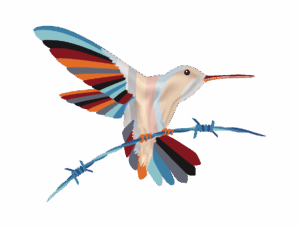
YES is grounded in over 40 years of Gary Howard’s research and work in schools across the United States, Canada, and Australia (Howard, 2014; Howard, 2016). In 2004, Maketa Wilborn and Benjie Howard founded an arts-based, youth-centered component aligned with Gary’s framework, weaving together original music, creative expression, and experiential, wilderness-based learning. For the next decade, they shared this work in school districts implementing Gary’s equity process. In 2014, Wade Antonio Colwell joined the team, bringing his music, artistry, and expertise in ethnic studies and restorative practices, and supporting the team in deepening the approach. Maketa moved on to pursue independent consulting, while Benjie and Wade renamed the work Youth Empowered Stewardship (YES) in 2015, developing a more intergenerational approach and continuing to take it to school districts throughout the country.
Today, the YES work is enriched by an expanded and diverse team of educators, leaders, authors, artists, facilitators, and students from across the United States and Mexico. The collective wisdom, creative practices, and lived experiences of this intergenerational team shape and sustain the work of YES. YES represents a fully integrated, intergenerational learning pathway for both youth and adults. It is rooted in the arts, experiential and Indigenous pedagogy, the long arc of research and efforts to transform schools, and the practice of creative resistance. The work is further strengthened by the contributions of Paul Bloomberg and Barb Pitchford’s Impact Team collaborative inquiry model to support systemic equity more comprehensively. Their work on collective efficacy and learner agency deepens YES’s commitment to equity-driven, student-centered learning. Together, these frameworks form a dynamic approach that ensures public education empowers more of us, across more of our differences, to succeed on our terms, without sacrificing who we are.
Through reflective arts-based practices and student-led initiatives, YES strengthens school culture by guiding leaders, educators, and students in co-creating an intergenerational learning environment that is responsive, just, and sustaining. Research indicates that democratic education is fundamentally about instilling values such as freedom, equality, and social justice within the school community (Wijaya Mulya et al., 2022). The active participation of students in governance not only enhances their educational experience but also prepares them to be informed and engaged citizens. The YES model builds the collective capacity of schools and districts to dismantle inequities—reducing opportunity gaps, disrupting exclusionary disciplinary practices, and advancing a culture where every learner thrives with agency, creativity, and purpose. By centering arts, culture, and student voice, YES fosters deeper connections, creative problem-solving, and transformative action, ensuring that schools are not just places of learning but spaces of belonging, liberation, and joyful expression.
The Inner Work of Stewardship
Empowered Stewardship begins with self-awareness. Before adults can engage in authentic intergenerational partnerships to transform school systems, we must first ask:
Who am I in this work?” and “How do I show up in spaces of learning, leadership, and growth?”
The YES process invites adults, educators, leaders, and caregivers alike to engage in deep reflection about their identities, values, and lived experiences. This is not peripheral work; it is foundational. Effective stewardship requires emotional courage, cultural humility, and a willingness to examine how our beliefs and behaviors impact others.
Just as students explore identity and voice through storytelling, the adult journey includes exploring positionality, interrupting bias, and practicing vulnerability. These dispositions are not prerequisites to action: they are a necessary part of the action. By engaging in this inner work, adults build the capacity to share power, disrupt inequity, and co-create liberatory learning environments.
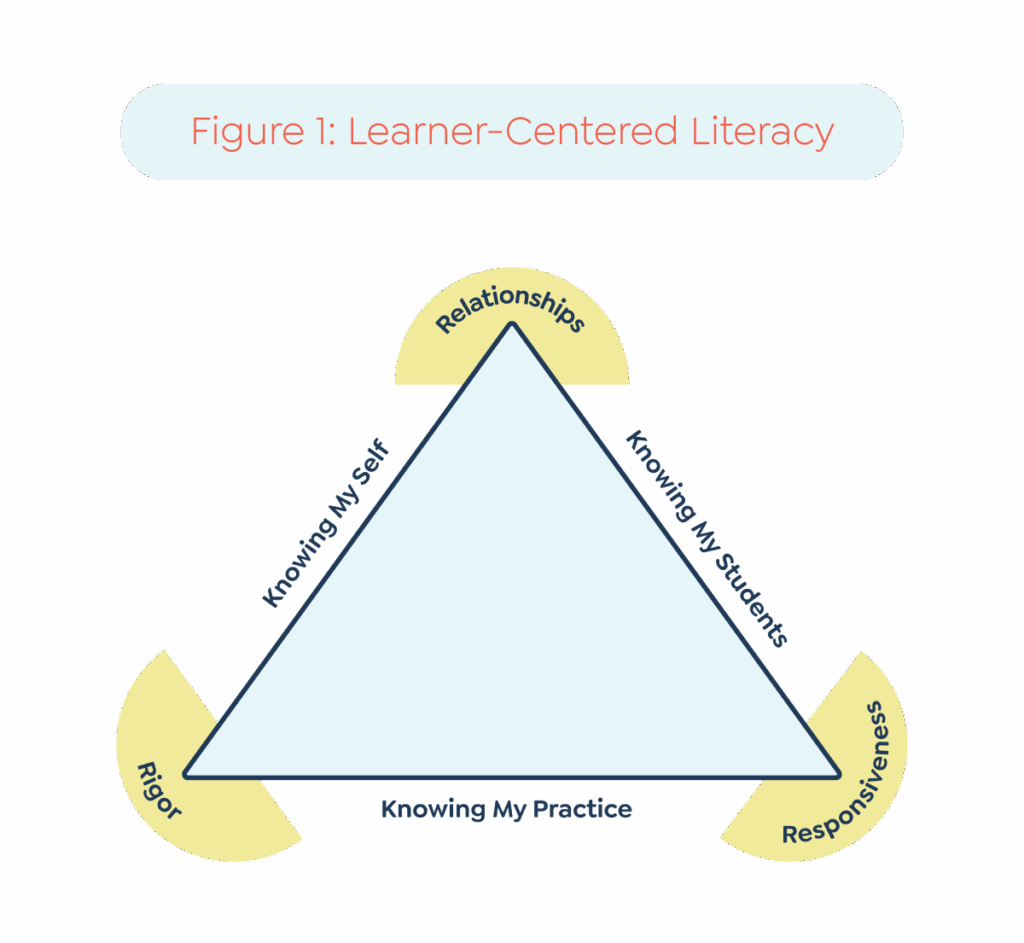
The Achievement Triangle
Building toward a culture of Empowered Stewardship requires both the will and skill to create authentic relationships with those who are different from us, as well as the capacity to know ourselves at a deeper level. It also calls us to know our students and value the unique stories, needs, and brilliance they each bring to the school community. In addition, we are called to continually grow our practice so we can more effectively join our colleagues in building a culture where more of our students, across more of their differences, achieve at a higher level and engage at a deeper level without giving up who they are.
Like a three-legged stool, the Achievement Triangle (Howard, 2016, pp. 129–140) brings balance and wholeness to the YES process, keeping focus on these three essential components of our individual and collective journey: knowing ourselves, knowing our students, and knowing our practice. In this way, the Achievement Triangle serves as a conceptual through-line guiding and integrating the YES work.
Centering Culturally Responsive and Sustaining Practices
To achieve true transformation, schools must move beyond simply acknowledging diversity. Equitable and inclusive learning environments require sustained, intentional action through practices that affirm cultural identities, cultivate belonging, and amplify the brilliance of every student and educator. Our Seven Stewardship Commitments bring these values to life and offer a framework for advancing the YES work across the school community. In the following section, each commitment is explored through the perspectives of teachers, students, and leaders, reinforcing that equity is collective work that flourishes when everyone is engaged as both learners and changemakers.
At the core of this work is the recognition that learning is relational. Trust, cultural humility, and a deep commitment to equity must guide the daily interactions between students, educators, and leaders. These relationships are sustained not just by tools and protocols, but by the dispositions of the adults involved—dispositions such as courage, compassion, curiosity, creativity, and an openness to growth. Stewardship is a way of being, not just a strategy. When students see their identities and experiences reflected in the classroom, they develop a stronger sense of agency, motivation, and investment in their learning. Similarly, when educators and leaders engage in critical reflection and shared decision-making, schools evolve into vibrant ecosystems of possibility, innovation, and belonging. This reality aligns with the findings of Taneri and Özbek (2023), who argue that embracing students’ cultural diversity as a strength can lead to more innovative and inclusive educational experiences.
By embracing the Seven Stewardship Commitments, we create learning spaces where every student is seen, heard, and empowered; where educators are valued as stewards of school culture and academic excellence; and where leaders foster conditions where individuals manifest their aspirations on their terms and the community thrives as a whole. Culturally relevant teaching practices are essential to achieving equity. Educators can design learning experiences that are more inclusive and equitable when they recognize and respond to the diverse needs of students (Ghaderi, 2023).
The Seven Stewardship Commitments Through Multiple Lenses
Building toward a culture of Empowered Stewardship requires both the will and skill to create authentic relationships with those who are different from us, as well as the capacity to know ourselves at a deeper level. It also calls us to know our students and value the unique stories, needs, and brilliance they each bring to the school community. In addition, we are called to continually grow our practice so we can more effectively join our colleagues in building a culture where more of our students, across more of their differences, achieve at a higher level and engage at a deeper level without giving up who they are.
01 Our Cultural Identities Are Affirmed and Valued
- Teachers say: I affirm and value each student’s identities. I seek deeper understanding.
- Students say: I get it that my teacher gets me.
- Leaders say: I recognize and affirm the value of each talent that the adults in my building bring. I intentionally create space for these talents to resonate throughout our building.
02 Our Relationships Are Rooted in Earned Respect and Cultural Humility
- Teachers say: I earn students’ respect. I am curious and know that I have a lot to learn from my students.
- Students say: I get it that my teacher sees me and respects me.
- Leaders say: I earn my staff’s respect. I am curious and know that I have a lot to learn from my teachers and staff. My greatest expression of respect for my staff is honoring their voice as the instructional leaders in our building.
03 Our Learning Environments Are Inviting, Culturally Relevant, and Vibrant
- Teachers say: My classroom is vibrant and colorful. It represents the lives and cultural realities of my students. It feels like a home for all.
- Students say: School is exciting and feels like a home for me.
- Leaders say: Our school is vibrant and inclusive. It represents the lives and cultural realities of my staff, who have the daily opportunity to show up transparent and authentic.
04 Our Expectations and Actions Amplify Adult and Student Brilliance
- Teachers say: I honestly and authentically believe in the capacity and brilliance of all my students. I am a loving and “warm demander.”
- Students say: My teacher believes I am brilliant.
- Leaders say: I genuinely and authentically believe in the capacity and brilliance of all my staff. I look for and assess the values of our school in each teacher and staff member that I hire. I am supportive and a “warm demander.”
05 Our Interactions Celebrate and Adapt to Diverse Ways of Knowing, Learning, and Being
- Teachers say: I am constantly growing my care and knowledge, and adjusting my practice in order to align with students’ brilliance.
- Students say: My teacher can sing harmony with my unique way of being brilliant.
- Leaders say: I am constantly growing my care and knowledge, and adjusting my leadership practices to align with my staff’s brilliance. I am a student of my staff.
06 Our Educational Experiences Reinforce Creative and Critical Thinking
- Teachers say: I am ever cognizant that in every lesson there is an opportunity for real-world relevance, for students’ outside-the-box thinking and creative expression, to think deeply about what they are learning, how they are learning it, and who benefits or who does not benefit from ideas.
- Students say: I am learning how to think for myself, to be creative, and to question things.
- Leaders say: I am ever cognizant that in every interaction there is an opportunity for real-world relevance, for my staff’s outside-the-box thinking and creative expression, to think deeply about their work, how they are performing it, and who benefits or who does not benefit from ideas.
07 Our Interactions Honor Individual Aspirations and Collective Responsibilities
- Teachers say: My practice accommodates individualist and collectivist cultural mindsets and ways of learning. I am preparing students to fulfill their aspirations and to be stewards in their communities.
- Students say: I am being prepared to reach my goals and to give back to my family, my community, humanity, and the land. I am responsible for my learning and for helping others learn.
- Leaders say: My leadership practice accommodates individualist and collectivist cultural mindsets and ways of working. I am preparing my staff to fulfill their aspirations and to be leaders and stewards in our professional learning communities.
These commitments guide power-sharing, honor diverse ways of knowing and being, and position students and educators as agentive co-creators of a just learning community.
This is the work of liberation. This is the future of education.
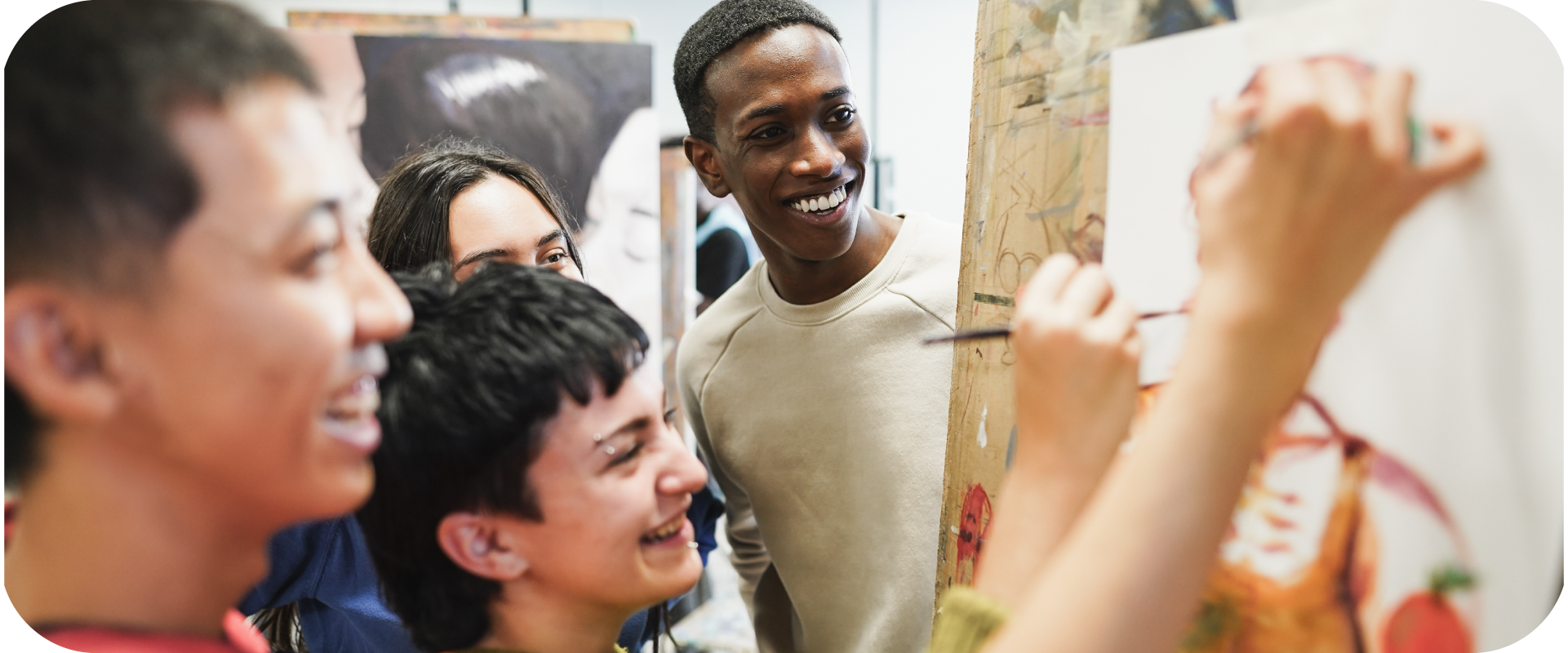
What Sets Youth Empowered Stewardship Apart?
Youth Empowered Stewardship (YES) is an opportunity for youth and adults to practice partnership as co-creators of a learning community where every voice matters and every learner belongs. Rooted in arts-based methods, research-based practices, and collaborative inquiry, the YES process elevates student agency and multigenerational perspectives, vision, and passion. It places them at the forefront of school policy and transformation.
As an evidence-based model, YES drives systemic equity by centering student-led advocacy and shared leadership in shaping school culture, strategic planning, and instructional practices. Central to YES is the formation of an intergenerational guiding coalition in which students, educators, families, and community members work side by side to shape the school’s vision, lead initiatives, and ensure the sustainability of equity-focused transformation.
Through the arts, students engage in expressive, immersive, and reflective processes that allow them to explore identity, challenge inequities, and co-design a more just educational experience. This approach fosters an inclusive, culturally sustaining learning environment where students are not just recipients of education but active participants in designing and reimagining their learning experiences.
By creating spaces of creative expression where young people see their identities, aspirations, and lived experiences reflected, YES ensures that every student has the opportunity to thrive, lead, and contribute to meaningful change. Through art and inquiry, students and adults co-create schools as vibrant ecosystems of belonging, equity, and liberation, where learning is rooted not only in knowledge but also in voice, creativity, and shared humanity.
Key differentiators of the YES approach:
Intergenerational, Evidence-Based Process
The Equity Stewardship process, rooted in intergenerational collaboration, has demonstrated statistically significant positive effects on student outcomes.
Capacity-Building Model
YES employs a gradual release of responsibility approach, ensuring that schools develop sustained, in-house expertise that continues beyond initial professional learning via collaborative inquiry. This model intentionally bridges generational perspectives to deepen impact.
Focus on Organizational Culture and Climate
While some programs jump straight to instructional strategies, YES prioritizes shifting culture and climate as a foundation for sustainable change. Intergenerational voices, including students, educators, families, and elders, are central to this transformation.
Classroom Applications
YES ensures that culturally responsive practices are embedded in every classroom, equipping educators with actionable tools while valuing the lived experiences and wisdom of multiple generations.
Strategic and Sustainable Planning
Schools receive tools to develop a long-term equity roadmap, ensuring that progress continues well beyond the initial implementation phase. Intergenerational partnerships help maintain momentum and accountability.
A Holistic Approach
YES leverages youth leadership, community engagement, and arts-based learning to foster an inclusive and empowered school environment. By centering intergenerational collaboration, the framework nurtures a culture of shared learning, mentorship, and collective action.
Activating YES Through Collaborative Inquiry
The YES collaborative inquiry model is where theory meets practice and evidence informs action, ensuring that inquiry is not just reflective but transformative. Rooted in liberatory design (Tucker- Ray et al., 2016) and human-centered design (Brown, 2009; Roschuni et al., 2013), the YES model integrates the Impact Teams Collaborative Inquiry approach (Bloomberg & Pitchford, 2023) to disrupt inequities and reimagine schools as justice-centered spaces. It empowers students, families, and educators to co-create new systems and practices that center belonging, dignity, and agency (Garcia-López et al., 2020; Ricci et al., 2018).
From Reflection to Sustained Impact: A Cyclical Process
At its core, empowered stewards engage in parallel and mutually reinforcing cycles of inquiry, ensuring that both professional learning and student-led inquiry drive system-wide change. This learning happens in both educators’ professional learning communities and intergenerational partnerships with students and community members. Adult learning communities serve as spaces for inquiry, feedback, reflection, and shared accountability, where educators grow their practice and strengthen their impact together. In addition, student-led advisories, intentionally created through a liberatory lens, provide a sustained, structured space for students to co-lead problem-solving, tackle complex educational challenges, and influence school culture in partnership with adults. These advisories serve as ongoing intergenerational spaces for dialogue, decision-making, and collaborative action, sustaining continuous improvement efforts over time and ensuring that changes are informed by those most impacted.
YES work flows across four Layers of Engagement: personal, professional, organizational, and structural, so change moves from the inside-out and outside-in. Stewards keep all four layers in view as they move through their inquiry cycles.
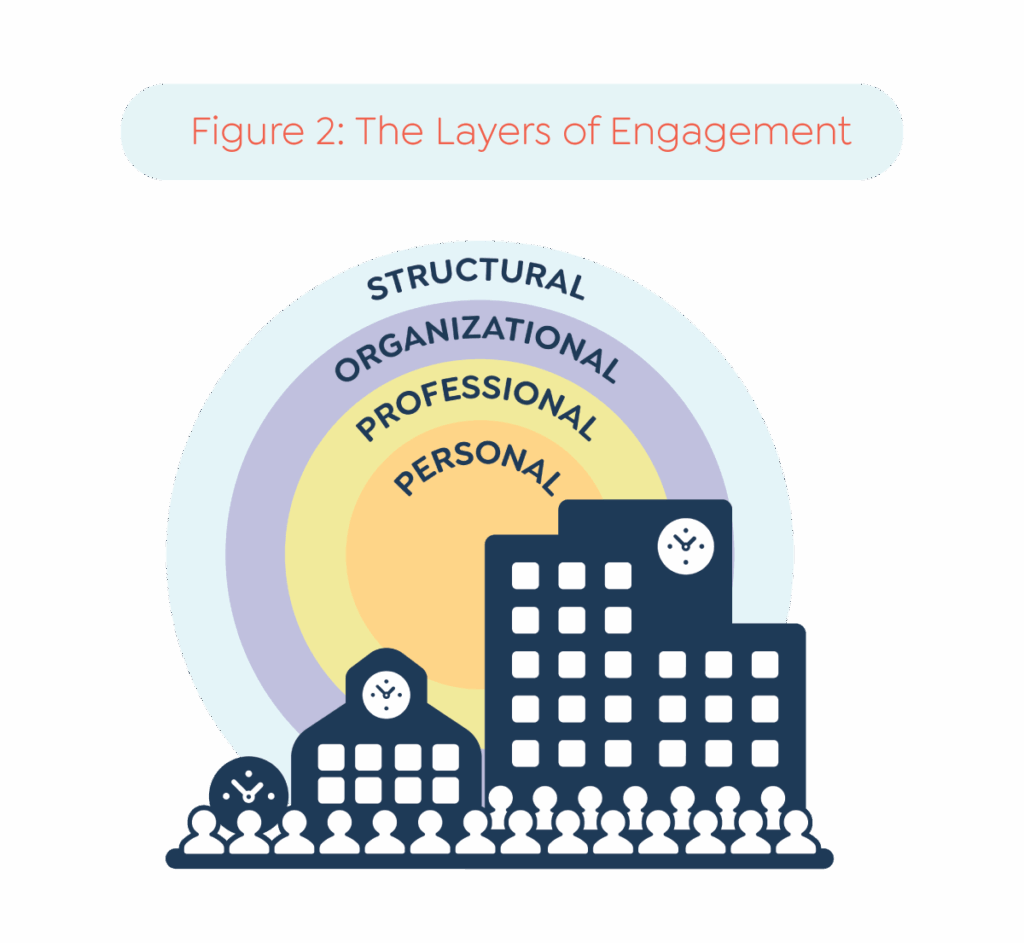
The YES inquiry model follows an iterative, design process that challenges oppression in education and fosters co-agency (Tucker-Ray et al., 2016):
- Notice and Disrupt: Pause to observe, reflect, and surface hidden inequities in learning experiences and school structures. Center historically silenced voices and challenge dominant narratives.
- Empathize and Deepen Awareness: Gather qualitative and experiential evidence, what Safir and Dugan (2021) call street data, by listening deeply to students, families, and communities. Honor counter-stories that illuminate systemic barriers.
- Define and Reframe: Triangulate empathy-driven insights with schoolwide data. Reframe challenges to address root causes rather than symptoms.
- Ideate and Imagine Beyond Constraints: Move beyond compliance-based solutions. Generate bold, equity-centered possibilities that disrupt the status quo and imagine liberatory futures.
- Prototype and Co-Create: Shift from ideas to action. Test, refine, and iterate strategies that center justice, student agency, and community power.
- Evaluate and Sustain: Assess impact through an equity lens. Identify how power shifts in decision-making and ensure continuous co-design with students and families.
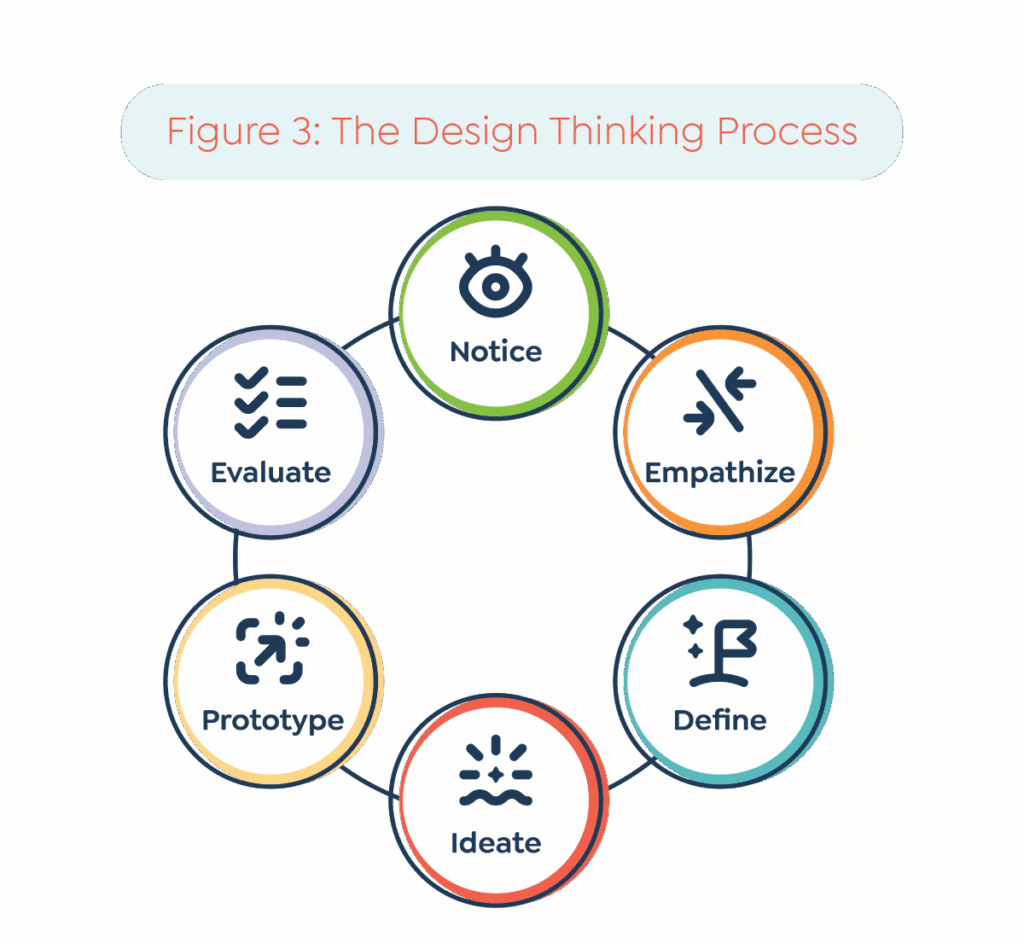
Transforming Schools Through Inquiry
The YES model moves beyond equity as an abstract goal and instead fosters sustained, justice-driven transformation. This approach ensures that schools center and amplify marginalized voices, actively dismantling oppressive structures and co-creating new, student-centered learning ecosystems.
The YES collaborative inquiry process grounds each cycle in the Achievement Triangle and is informed by the Seven Stewardship Commitments. Collectively, they serve as powerful anchors, ensuring that inquiry is not just about intervention, but about creating learning environments where every student belongs and thrives. Throughout the inquiry process, students and adults use the Impact Team Evidence–Analysis–Action (EAA) Protocols to drive their inquiry based on their purpose; teams engage in a structured yet flexible process that deepens understanding of key evidence and drives meaningful personal and collective actions (Bloomberg & Pitchford, 2023).
This inquiry approach creates intentional spaces for co-constructing equitable learning experiences that honor identity, promote inclusion, and advance justice. To sustain their impact, leaders routinely check progress through conversations and reflection around the Four A’s:
- Alignment: Does the idea of a Culture of Empowered Stewardship align with your current mission, vision, and strategic goals? Assure that the Stewardship work is connected to and supportive of your school/district’s foundational elements. Ensure that the work is connected to previous equity and inclusion efforts and other ongoing programs/approaches to avoid duplication of efforts and the perception of isolated initiatives.
- Accountability: Across all levels of the organization, do individuals and teams have the Stewardship work integrated into planning, implementation, and goal-setting efforts? What evidence will they gather to know their impact? Leaders at the district and school levels need to be engaged in continuous improvement conversations related to their Stewardship goals and outcomes and have evidence of results built into their professional growth plans and performance reviews.
- Assessment: Are there regular check-ins and ongoing review processes in place to track and document YES outcomes across all levels of Stewardship engagement (personal, professional, and organizational)? How can action plans be consistently tracked, assessed, and updated?
- Advocacy: Are all members of the community actively engaged and represented in the YES process? Are the concerns of the traditionally marginalized listened to and effectively addressed so they can be empowered stewards for the community? In the Stewardship process, particular attention is given to students, employees, families, and members of the community who have been marginalized, excluded, or not effectively served by the school or district.
Evidence of Impact: DuPage High School District 88
One of the most compelling examples of YES in action is DuPage High School District 88 in Illinois. Facing disparities in AP enrollment, discipline, and special education referrals, district leaders partnered with YES to engage both students and staff in an intergenerational equity transformation.
Key Outcomes Achieved at DuPage:
Increased AP Enrollment Among Underrepresented Students
The number of Black student AP test takers grew by two-thirds from 2006–07 to 2019–20, and Hispanic student participation more than doubled.
Reduced Disciplinary Disparities
Suspension rates decreased across all demographic groups as restorative practices and youth engagement strategies took hold.
Youth-Led Curriculum Advocacy
Students successfully lobbied for the creation of new social studies courses that better reflected the cultural realities of the district.
Intergenerational Equity Collaboration
Teachers reported increased student engagement, trust, and belonging, which translated into stronger relationships and improved academic performance.
The Streams of Youth Empowered Stewardship
Structured around five core Streams of Engagement, the YES framework provides a solution-oriented foundation for systemic change, nurtures trust and community, challenges social dominance, strengthens intergenerational partnerships, and uplifts voices through artistic expression. Each asset-based stream cultivates a school culture where equity is not just an aspiration but a lived practice that honors diverse identities, challenges systemic barriers, and empowers all members of the community to thrive.
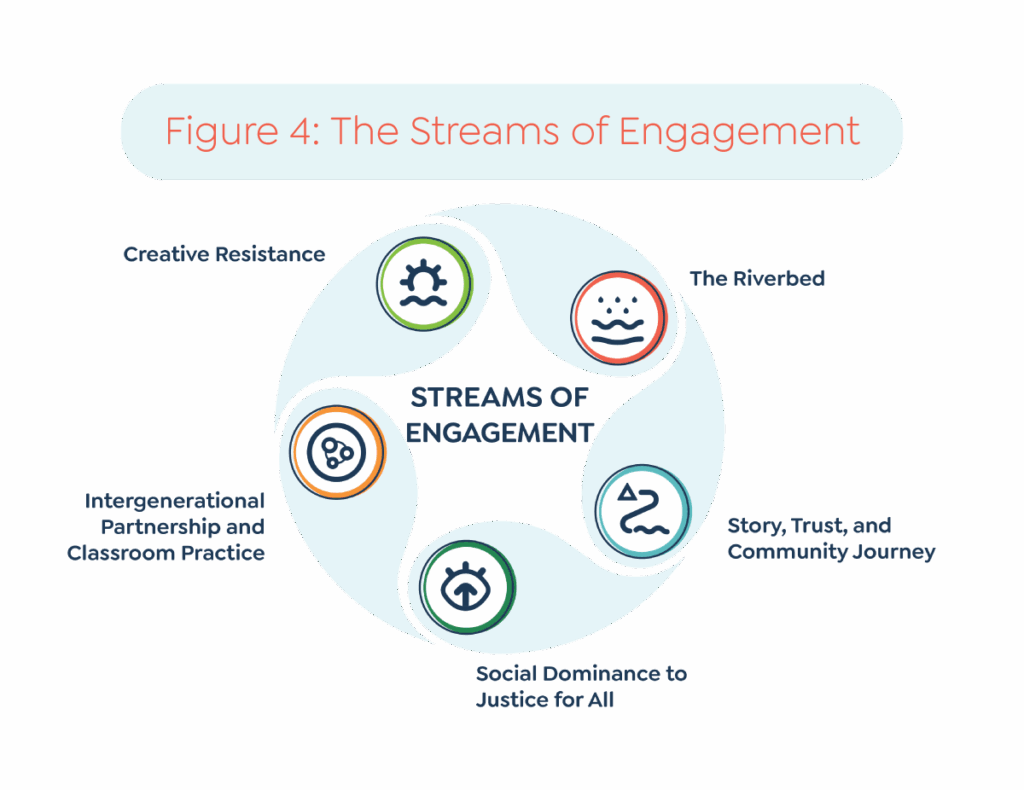 These five core Streams of Engagement guide the transformation of school communities engaged in the work of Youth Empowered Stewardship:
These five core Streams of Engagement guide the transformation of school communities engaged in the work of Youth Empowered Stewardship:
01 The Riverbed: Building the Foundation
- Build a strong base over which Equity Stewardship learning and transformation can flow and flourish.
- Ensure that supports are established for adult stakeholders, helpful protocols are used, and appropriate frameworks and expectations are understood and agreed upon.
02 Personal Story, Trust, and Community Journey
- Understand the value of sharing personal stories to enrich community wisdom and build empathetic relationships.
- Learn the skill of artfully co-creating vibrant and compelling learning spaces grounded in trust, social-emotional wellness, courage, and curiosity.
03 Social Dominance to Justice for All
- Engage in group dialogue to develop a broad perspective on the dynamics of social dominance, building capacity to effectively engage as stewards of equity.
- Expand awareness of multiple lenses of difference, recognizing botsh barriers and doorways to justice.
- Challenge systemic biases that limit student, family, and professional excellence.
04 Intergenerational Partnership and Classroom Practice
- Build and sustain multigenerational teams of staff and students to advance schoolwide equity initiatives.
- Engage in equitable collaboration to enhance the overall experience of school, addressing both individual needs and systemic transformation.
- Engage students, staff, leaders, and families in the work of growing culturally responsive/ sustaining practices.
05 Creative Resistance
- Challenge extractive power dynamics and support generative power dynamics
- Participants express their uniqueness as artists, contributing to community uplift in schools and beyond.
- Amplify cultural expression and knowledge through the arts and celebration.
- Apply creative expression to conflict resolution and relationship restoration, fostering healing and connection.
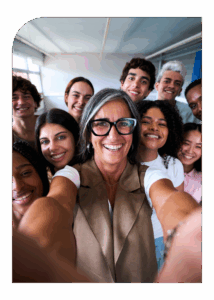
Our Services
Youth Empowered Stewardship (YES) offers a comprehensive and adaptive suite of services designed to build lasting capacity across school communities. Grounded in intergenerational collaboration, creative expression, and culturally sustaining pedagogy, each offering below is customizable to meet your school or district’s unique goals. Whether your system is just beginning the Stewardship journey or deepening its equity commitment, YES provides coaching, professional learning, and tools to guide the work moving forward.
YES provides a variety of professional learning and coaching options tailored to school and district needs.
Keynotes and Workshops
YES offers interactive keynotes and hands-on workshops that inspire shared purpose and introduce the core Seven Stewardship Commitments.
- Introduce culturally sustaining practices and intergenerational learning
- Engage teams in arts-integrated reflection and storytelling
- Build momentum for student-centered equity transformation
- Tailor delivery to meet your school or district’s context
Implementation and Coaching Support
YES coaches partner with educators and leaders to embed equity practices and adult learning cycles into everyday instruction and leadership.
- Co-plan instructional inquiry using Impact Teams Evidence, Analysis, and Action (EAA) protocols
- Facilitate adult learning communities that deepen reflection and shared leadership
- Support adult disposition development and metacognitive practices
- Provide feedback on systems-level implementation and sustainability
Student Ambassador Training
Student-centered leadership learning experiences cultivate agency, creative expression, and advocacy in ways that shape school climate, curriculum, and culture.
- Develop ambassadors’ ability to lead equity forums, facilitate professional development, and organize community events
- Guide student ambassadors in co-designing curriculum and learning environments
- Facilitate performance- and project-based storytelling aligned to academic goals
- Prepare ambassadors to engage in policy, community, and board-level collaboration
Family and Community Engagement
YES supports schools in co-creating trust-based, culturally sustaining partnerships with families and community members.
- Host intergenerational storytelling and dialogue events
- Facilitate family workshops on belonging, stewardship, and voice
- Partner with elders and cultural leaders to honor local histories
- Engage caregivers in co-creating shared goals for student learning
Integration of Creative and Culturally Sustaining Practice
YES supports schools in co-creating trust-based, culturally sustaining partnerships with families and community members.
- Host intergenerational storytelling and dialogue events
- Facilitate family workshops on belonging, stewardship, and voice
- Partner with elders and cultural leaders to honor local histories
- Engage caregivers in co-creating shared goals for student learning
Strategic Planning and Equity Audit Facilitation
YES partners with leadership teams to analyze equity conditions, set vision-aligned goals, and sustain momentum through student voice and data.
- Facilitate climate audits and youth-centered data protocols
- Co-develop success indicators grounded in the Seven Stewardship Commitments
- Align YES practices with school improvement and equity plans
- Support iterative reflection and adaptation cycles for long-term change
A Call to Action
Youth Empowered Stewardship offers a comprehensive movement toward sustainable, student-centered transformation. By elevating youth voice, fostering intergenerational collaboration, and embedding equity into school culture, guided by the Seven Stewardship Commitments, this framework provides a roadmap for schools and districts seeking authentic, systemic change.
Through this model, educators and students become partners in learning, working together to create an environment where every student feels seen, valued, and empowered to succeed. Schools that commit to YES are not just addressing disparities; they are building a legacy of equity, inclusion, and student-driven change.
Let’s begin the work of stewardship together, with courage, creativity, and a commitment to lasting change.
Follow the QR code for more information on joining the Youth Empowered Stewardship movement.
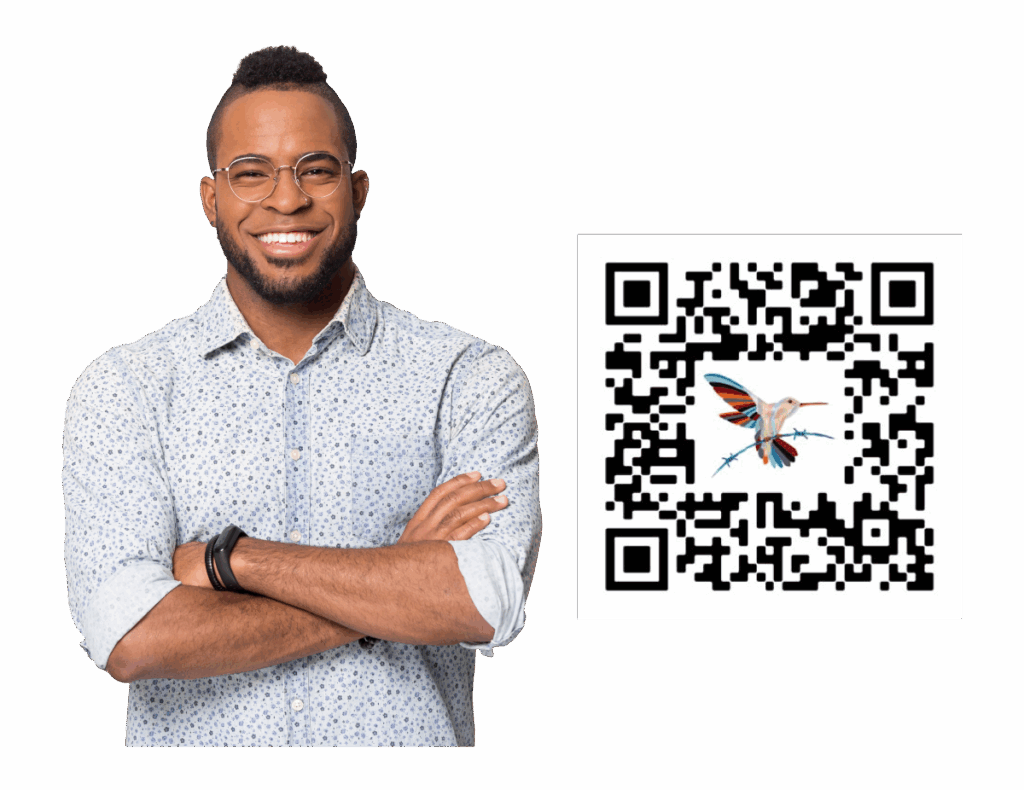
References
- Boske, C. (2012). Aspiring school leaders addressing social justice through art making. Journal of School Leadership, 22(1), 116–146. https://doi.org/10.1177/105268461202200106
- Bloomberg, P., & Pitchford, B. (2023). Leading impact teams: Building a culture of efficacy and agency. Mimi and Todd Press.
- Garcia-López, C., Mor, E., & Tesconi, S. (2020). Human-centered design as an approach to create open educational resources. Sustainability, 12(18), 7397. https://doi.org/10.3390/su12187397
- Ghaderi, S. (2023). Designing OER with equity: An example of situating equity in a community college statistics course redesign Open Praxis, 15(3), 235–243. https://doi.org/10.55982/ openpraxis.15.3.572
- Golden, T. L. (2022). Innovating health research methods, part II. Family & Community Health, 45(3), 150–159. https://doi.org/10.1097/fch.0000000000000337
- Howard, G. R. (2014). We can’t lead where we won’t go: An educator’s guide to equity. Corwin Press.
- Howard, G. R. (2016). We can’t teach what we don’t know: White teachers, multiracial schools. 3rd Ed. Teachers College Press.
- Ricci, D., Brilli, A., & Tassi, R. (2018). Repurposing digital methods for human-centered design. In C. Storni, K. Leahy, M. McMahon, P. Lloyd, & E. Bohemia (Eds.), Design as a catalyst for change. DRS International Conference 2018, June 25–28, 2018, Limerick, Ireland. https://doi.org/10.21606/ drs.2018.308
- Roschuni, C., Goodman, E., & Agogino, A. M. (2013). Communicating actionable user research for human-centered design. Artificial Intelligence for Engineering Design, Analysis and Manufacturing, 27(2), 143–154. https://doi.org/10.1017/s0890060413000048
- Safir, S., & Dugan, J. (2021). Street data: A next-generation model for equity, pedagogy, and school transformation. Corwin.
- Taneri, P. O., & Özbek, Ö. Y. (2023). Promoting diversity and culturally responsive pedagogy in higher education. International Journal of Turkish Education Sciences, 2023(21), 765–813. https://doi. org/10.46778/goputeb.1333036
- Wijaya Mulya, T. W., Sakhiyya, Z., Muslim, A. B., & Suryani, A. (2022). Locally-grounded, embodied, and spiritual: Exploring alternative constructions of democratic education with/in Indonesian schools. Pedagogy, Culture & Society, 32(5), 1127–1143. https://doi.org/10.1080/14681366.2022.21428 40


